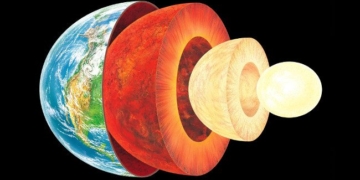This is the first time scientists have found signs of reproduction and development of the South American pink iguana since this species was discovered several decades ago and is at risk of extinction.
Researchers have identified a new hatchling group of the South American pink iguana, a reptile that is considered endangered and originates from Isabela Island in the Galapagos Islands of Ecuador.

South American pink iguana. (Source: NBC News).
This marks the first discovery of signs of reproduction and growth of the South American pink iguana since its discovery several decades ago.
The South American pink iguana is native to the slopes of Wolf Volcano on Isabela Island. It is estimated that only a few hundred individuals remain in the wild today.
In a statement on December 20, the Director of Galapagos National Park, Mr. Danny Rueda, highlighted that the discovery of new hatchlings of the South American pink iguana marks a significant milestone in the efforts to conserve this species.
Adult South American pink iguanas can grow up to 47 cm in length. The species was first discovered by park rangers at Galapagos National Park in 1986.
After decades of research, scientists have recognized that the pink iguana is a distinct species from others found on the islands.
Galapagos National Park has reported that the population of the South American pink iguana is threatened by declining numbers due to invasive species on the island, particularly rodents.
The Galapagos Islands, with their rich biodiversity and unique wildlife, inspired the evolutionary theory of British scientist Charles Darwin.
This area is home to several species of animals that cannot be found anywhere else in the world, such as giant tortoises, flightless cormorants, and several species of iguanas, including the pink iguana.


















































